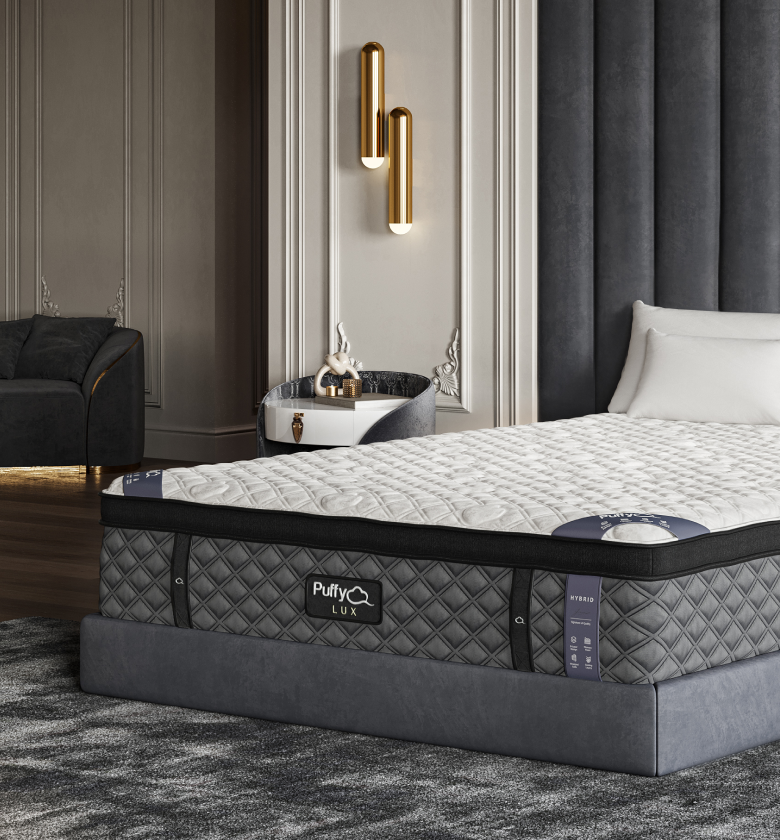When you’re dealing with joint pain, a good night’s sleep isn’t a luxury; it’s a necessity for overall well-being. The mattress you sleep on plays a pivotal role in determining the quality of your rest, which in turn affects your joint health.
In this comprehensive guide, we’ll explore the factors you need to consider when selecting the best mattress for joint pain and offer insights to guide your purchase decision.
Mattress for Joint Pain: What to Consider
To make a well-informed choice, focus on these critical factors:
Firmness Level
While personal preference plays a role, a medium-firm mattress is generally ideal for balancing comfort and support, essential for alleviating joint pain.
Material
Whether it’s memory foam, latex, or a hybrid, each material has its unique benefits and downsides tailored to suit different needs.
Sleep Position
Your sleeping posture affects the mattress type you should go for. Side sleepers need different support compared to back or stomach sleepers.
Budget
Quality matters, but so does affordability. Choose a mattress that offers both.
Best Mattress for Joint Pain: Types and Recommendations
To immediately get to the point: Memory foam, latex, and hybrid mattresses are generally the best options when you’re looking to alleviate joint pain. The following section provides an exhaustive examination of these mattress types, detailing their respective advantages and disadvantages to help you make an educated choice.
Memory Foam
Memory foam mattresses are well-regarded for their pressure-relieving properties. Here’s why they excel:
-
Pressure Relief: Memory foam offers superior contouring, providing relief by distributing your body weight evenly across the mattress.
-
Motion Isolation: The material effectively isolates movement, making it a good option for people who share a bed.
-
Cost: Memory foam mattresses come in various price ranges, making it easier to find one that fits your budget.
Drawbacks:
- They can retain heat, which may be uncomfortable for some people.
- Over time, memory foam may sag, reducing its effectiveness in providing adequate support.
Consider Puffy Cloud Mattress if you’re seeking joint pain relief. This matress is designed with advanced foam technologies that provide excellent pressure relief and support.
Latex
Latex mattresses are another viable option, especially if you’re looking for a more natural alternative. Here’s why:
-
Durability: Latex mattresses are long-lasting and retain their shape over time.
-
Natural Materials: Many latex mattresses are made from natural materials, making them eco-friendly and hypoallergenic.
-
Support: Latex offers substantial yet gentle support, which can be good for joint pain relief.
Drawbacks:
- Generally more expensive than other types.
- Some people find latex to be too firm or bouncy for their liking.
Hybrid
Hybrid mattresses aim to provide the benefits of both innerspring and foam/latex mattresses. Key advantages include:
-
Adaptability: Suitable for a wide range of body types and sleeping positions.
-
Breathability: The coil layer helps with airflow, making hybrid mattresses cooler than all-foam options.
-
Support: The combination of foam and coils provides balanced support, effective for joint pain relief.
Drawbacks:
- They can be expensive due to the combination of materials.
- Potentially less durable compared to all-latex mattresses.
If you have SI joint pain, consider looking into Puffy’s hybrid mattresses. They offer targeted support and a balanced level of comfort, particularly beneficial for SI joint pain sufferers.
By understanding the merits and drawbacks of each mattress type, you can make a tailored decision that best addresses your joint pain. This level of personalization is crucial, as joint pain is a highly individualized experience.
Interested in how Puffy stacks up against other brands? Check out our mattress comparisons: Puffy vs Purple, Puffy vs Nectar, Puffy vs Casper, Puffy vs Leesa, Puffy vs Saatva, and Puffy vs DreamCloud.
Can a Bad Mattress Cause Joint Pain?
It’s critical to understand that an unsuitable mattress can not only fail to provide relief but can exacerbate existing joint pain. This is due to poor spinal alignment and inadequate support.
Best Mattress for SI Joint Pain: Targeted Relief
When suffering from SI joint pain, targeted support is necessary, particularly in the lower back and hip areas. A medium-firm hybrid or foam mattress can offer the localized support required.
Check out Puffy mattress reviews from real customers and see how we compare with other brands.
How to Maximize the Benefits of Your Mattress
Your mattress alone won’t do all the work; you can augment its benefits:
- Choose the right pillow for neck and shoulder support.
- Consider a mattress topper for an additional layer of comfort.
- Rotate your mattress regularly to extend its lifespan.
Additional Alternatives and Solutions
If buying a new mattress isn’t an immediate option:
- Use a high-quality mattress topper to improve comfort.
- Seek medical advice for a comprehensive treatment approach to your joint pain.
Use our store locator to find the closest furniture or mattress store near you and feel the cloudlike comfort of our Puffy Mattress in person.
Conclusion
Selecting the best mattress for joint pain is a vital step in your journey towards more comfortable and restorative sleep. By giving due consideration to factors like firmness, material, sleep position, and budget, you can make an informed decision that not only suits your individual needs but also contributes to your overall well-being.

- Award-winning comfort.
- Lifetime warranty.
- 101-night sleep trial.
- Free shipping and returns.
- 100% made in USA.












